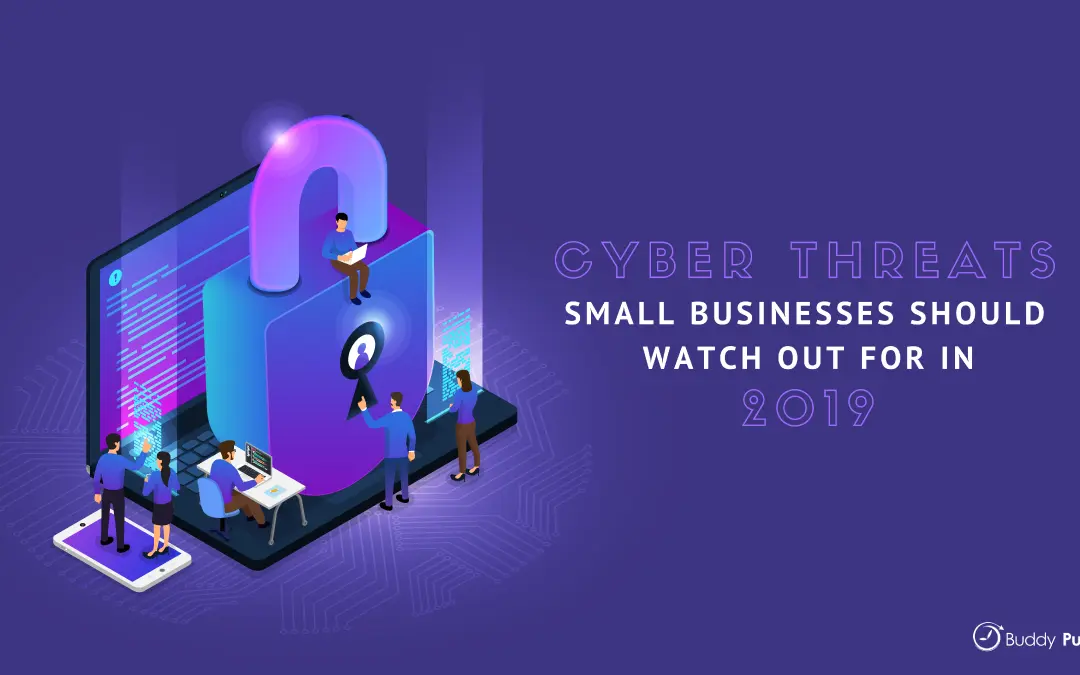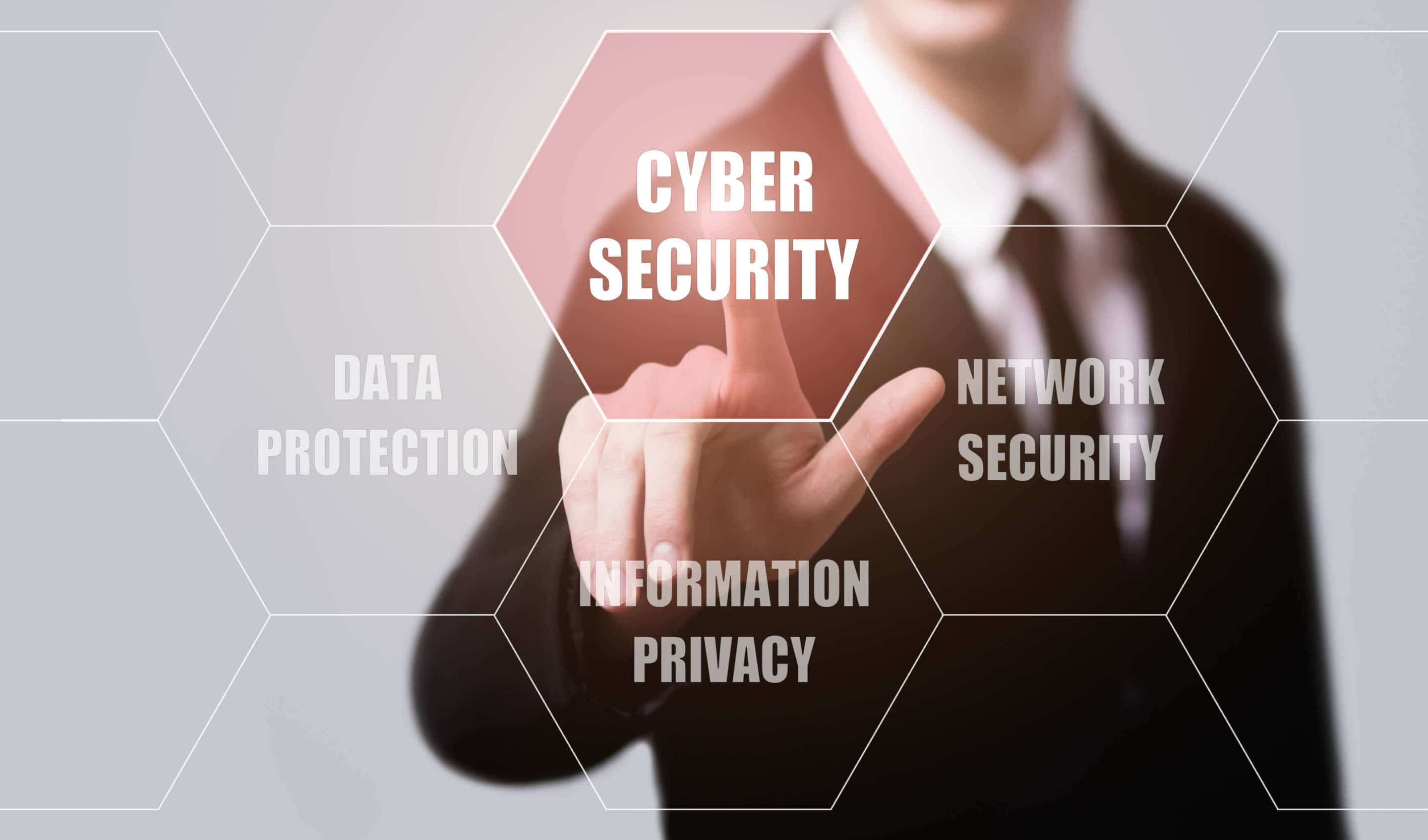Cyber Threats Small Businesses Should Watch Out For

A lot of small business owners think that simply because they are a small business that they won’t experience any kind of cyber threat. While they are less likely to be targeted than big businesses, it doesn’t mean they aren’t vulnerable.
The price small companies pay for neglecting to protect themselves from a cyber threat can be massive. Larger businesses have many fail-safes in place to ensure they will be protected in the event their business information is compromised. So even if an intruder gets into their system, they will still be protected. Since most small businesses aren’t as worried about cyber threats, they don’t have any systems or processes in place to help them recover when something does happen, which can permanently damage a business.
In recent years, cybercriminals have begun to focus on small to medium-sized companies with increasing frequency. There are two main reasons for this alarming uptick:
- Criminal hackers believe that small businesses are easier to target than large corporations. They generally think that a small businesses cybersecurity system is less sophisticated and easier to hack.
- Cybercriminals will use attacks on small to mid-sized companies as a “trial run” of sorts for large-scale campaigns.
Cyber Attacks and Their Impact
According to a recent survey, only about 13% of small business owners believe that their business is in danger of being targeted by cybercriminals.
That means there’s a whopping 87% of small business owners who don’t think that are vulnerable to cyber attacks. That kind of thinking is exactly what makes small businesses the perfect target.
In 2017, approximately 61% of small businesses were victims of cyber attacks. That number climbed in 2018 and experts believe those numbers will continue to climb in years to come. To get a better idea of how cyber attacks impact a business, considering the following statistics:
- In 2017, the average cost for a small to mid-sized company to recover from a cyber attack was nearly $500,000. 20% of the attacks in 2017 costs small to mid-sized companies between $1 and $2.5 million.
- Nearly 50% of small business owners believe that their company would be unprofitable within a month after a serious cyber attack.
- Approximately 60% of small businesses completely fail within a year of the cyber attack.
These numbers are concerning. A good portion of small business owners understand the impact a cyber attack could have on their business but aren’t taking the steps to protect themselves. So where’s the issue?
Many small business owners don’t have the luxury of paying for top cybersecurity software or the budget to implement new security protocols, but they can keep informed and do their best to ensure they are protected. Let’s take a look at the top five types of cyber threats your small business should watch out for this year.
Top Five Cyber Threats
1. Software Update Attacks

Software update attacks, or more commonly known as software update supply chain attacks, are when malware code is injected into otherwise safe software at different distribution points. If you get certain software from a large company, and that company is attacked, the damage could be passed onto you. Most often these type of malware attacks occur at production and distribution points and they can be difficult to prevent.
Supply chain attacks have risen sharply in the past few years and are expected to continue being a threat to small businesses in the future. With that being said, it is crucial that your small business take certain steps before implementing or updating any software. Here are a few preventative measures you should take to ensure your business is safe from supply chain attacks:
- Inspect the software provider’s website before updating their products. If their website isn’t up-to-date, reach out to them prior to making any changes.
- Do small scale testing of any new software updates before applying the update to your entire system.
- Once your software is updated, be sure to monitor your system closely to pinpoint suspicious behavior patterns. Doing so will help you to block any dangerous applications before they can damage your system.
2. Phishing Cyber Attacks

Phishing attacks are probably one of the most well-known threats to small business cybersecurity. Phishing attacks are generally carried out by cybercriminals who will impersonate companies that many would consider reliable. Generally what happens, in this case, is that users will enter sensitive information, including credit card numbers, usernames, and passwords into a phony website.
Once the cybercriminals have this sensitive information, they’re free to attack the organizational system. The damage that can be done to your business is endless at that point. They can steal your information as well as customer information and use it to steal identities, try credit card scams and many other fraudulent operations. If this happens to your business, not only will you need to settle an inevitable class action lawsuit, but your company will also have to pay to repair any damage your organization has incurred.
You can guard your business against these types of attacks by ensuring your employees know how to spot fake information, including emails, and report anything they see that would be considered suspicious. The more informed you and your employees are about these attacks, the better off your business will be.
3. Ransomware Attacks
While ransomware attacks have been around for quite some time, they didn’t garner a lot of attention until 2017. That is the time when the WannaCry cyber attacks took over approximately 200,000 computers by encrypting their data. These cybercriminals demanded a Bitcoin ransom before unblocking all affected users.
Thankfully, security experts put a stop to most of the attacks within a matter of days, but not before the victims of the attack paid over $130 million dollars for the release of their data. Many analysts believe that the WannaCry attack still lies dormant in thousands of more computers worldwide, so who knows if we have seen the last of it.
Being that there are a lot more ransomware attacks being deployed every day, small businesses should focus on building up an effective defense against them. There are three ways that a small business can protect themselves.
- You and your employees must understand how ransomware attacks work and how they affect your business. Unlike other types of cyber attacks, ransomware attacks encrypted data and essentially “holds it hostage.” In other words, they’ll hold your data hostage until you agree to pay for its release. Because of the nature of ransomware, traditional anti-virus software isn’t effective against them, so and your employees must be aware of the threat.
- Small businesses should properly train their employees as a defense and also use what’s referred to as “endpoint protection.”
- Lastly, it would be wise to store critical data at multiple locations along with a recovery strategy in place before a ransomsware attack occurs.
4. Advanced Persistent Threats
An advanced persistent threat happens when malicious code is inserted into an organizations network and slowly steals data. The data stolen can include everything from passwords to financial information. Because they steal data at such a slow rate, they are often very difficult to detect. Unless caught, the code will gradually sink deeper into the network allowing the attackers to gain entry to other organization networks as well.
While traditional security measures such as firewalls and anti-virus protection won’t protect you from APT attacks, there are some steps you can take to prevent them from happening. First and foremost, you should divide your network into segments. This way if one portion of the network is harmed, the remaining segments will be unaffected. Your business should also consider investing in an Advanced Persistent Threat Protection suite. Advance Persistent Threats are some of the most persistent and damaging types of cyber threats your company will come across, so it’s imperative that you use both measures to protect your business.
5. Denial-of-Service Attacks
A denial-of-service attack happens when a cybercriminal blocks authorized users from accessing their network. They accomplish this by blocking a network’s internet connection with an overwhelming amount of requests. Most systems are unable to withstand the number of incoming requests. As a result, it system becomes overloaded and is unable to fulfill a portion of legitimate user requests. If the flood requests come from multiple different sources, it is known as a distributed denial-of-service attack or DDoS.
Protection from a DoS or DDoS attacks generally requires a combination of tools including detection applications, blocking mechanisms and traffic classification. If you’re a small business looking for a way to protect yourself, it would be a good idea to take advantage of dedicated DDos solutions.

Cybersecurity is becomingly increasing important – especially for small businesses. Having a cybersecurity plan in place can help protect your business and your employees.
The Future of Small Business Cybersecurity
Small businesses can no longer ignore the fact that they may not be protected from cyber attacks. They have to evolve and keep up with the efforts of cybercriminals otherwise, the results can be disastrous.
We have gone over a few ways to safeguard your business against specific cyber attacks, but you’ll have to do more to stay protected. You should start by coming up with a cybersecurity plan. Here is a quick list of important components that every cybersecurity plan should include.
- Strong passwords and two-factor authentication.
- Updated anti-virus software and anti-malware
- Effective firewalls
- Software update policies
- Annual user training
- Network monitoring systems
- An attack response plan
With hackers and cybercriminals focusing in on small businsses as of late, it’s more important than ever to make sure your business is protected. Your business and your employees deserve protection along with your clients. Make an investment to protect yourself now before the inevitable attack occurs – you’ll be glad you did!

